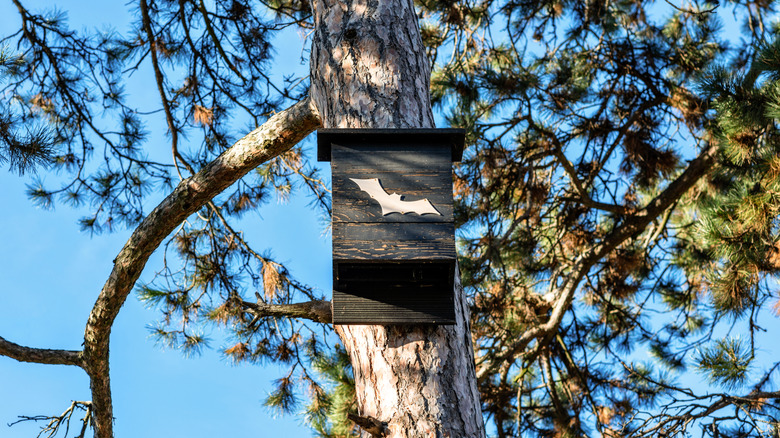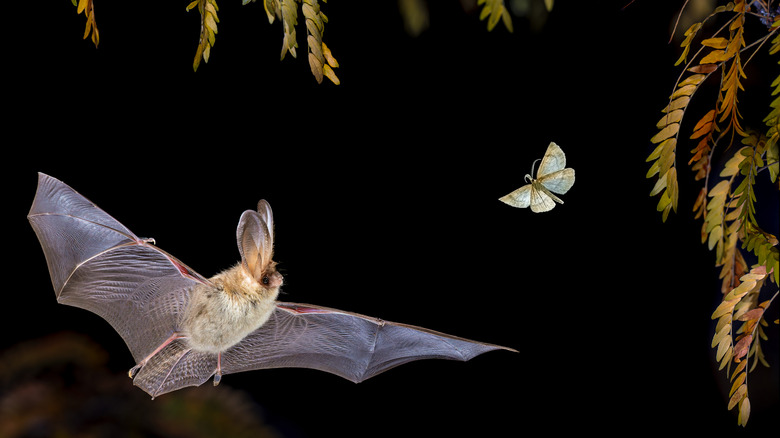Before You DIY That Bat House, Experts Have A Warning
People want to attract bats to their properties for their importance to the environment and pest control advantages. These mysterious, and somewhat feared, winged mammals are also essential pollinators. Plus, they eat mosquitoes, as well as many other crop damaging pests. In fact, building a bat house might be the mosquito solution of your dreams. For this reason, people often buy or build bat houses to encourage the creatures to hang around.
But, before you DIY that bat house, experts have a warning. Researchers at the University of Illinois found that poorly designed bat houses can cause bats to overheat and die. Prior to building or purchasing a bat house, it's important to understand how the wrong design can cause harm to bats. Many of the bat houses sold in stores and online are too small and dark colored, which can contribute to overheating in hot weather. When designing your bat house, it's helpful to know the right size and placement of the house to keep bats safe and comfortable.
How the wrong bat house can cause harm
University of Illinois bat ecologists, Joy O'Keefe and Reed Crawford, studied data on bat houses and how their design affects bat health. Understanding their findings can help with decision making as you search for how to build a bat house or order one online. Their research was published in the journal "Conservation Science and Practice".
The warming climate and poorly designed bat houses contribute to the problem of overheating. Bats need room to move around when they get too hot. Small bat houses don't allow for easy movement and can result in overcrowding. This can cause the bats to get trapped and overheat inside the box. On the flip side, larger boxes provide more space for bats to move when they get too warm.
The color of the bat house can impact the temperature inside, too. Although many bat houses are painted black, this darker color contributes to the problem of overheating. University of Illinois researchers found that darker bat houses can be more than 40 degrees hotter than white boxes. Some were found to reach temperatures of 142 degrees inside. This is far to hot because in natural environments, bats will avoid areas above 97 degrees.
Safely attracting bats to your yard with the right type of bat house
Seeing bats in your yard is a sign of a healthy ecosystem. Bats, like most creatures, require reliable sources of food, water, and shelter to thrive. When your backyard environment has what they need, attracting bats to your yard is easy. However, when welcoming these vital pest controllers and pollinators to your property, you want to provide a safe place for them to rest.
When you look for designs to DIY your bat house, the size of the house, materials you choose, and color are essential considerations. In addition to building a roomy bat house, you may want to consider using wood cement over plywood, or adding chimneys if you live in a hot area where overheating is a concern. Lighter colors, such as white or light brown, are better than dark colors for keeping the bat house at just the right temperature.
Where you place the bat house also matters. The house should be mounted at least 12 feet off the ground on a pole or the side of a building. Ideally, it should get morning sunlight to warm the inside but not direct sunlight in the hottest part of the day, which will make it too hot. As an alternative, bat ecologists recommend looking for other ways to help bats, such as planting native trees, leaving dead trees standing for natural roosting places, and providing sources of clean water.


